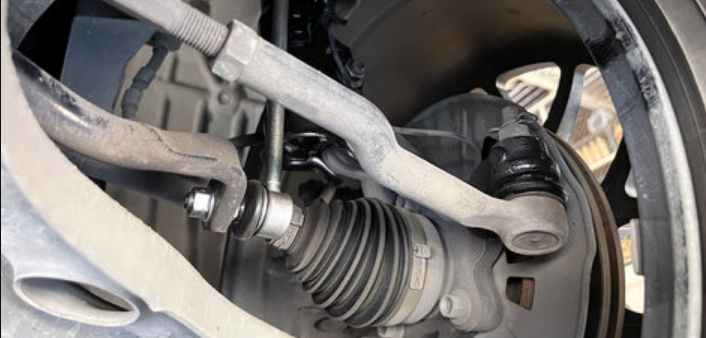Ball Joint and Tie Rod End for Cars, What is the difference? – Tie rods and ball joints are both essential components of a vehicle’s steering and suspension systems, but they serve different purposes and have distinct functions.
Tie rods are part of the steering linkage system and play a crucial role in connecting the steering mechanism to the wheels. They are responsible for transmitting the steering input from the steering gear (such as a rack and pinion or steering box) to the steering knuckles, which control the movement of the wheels.
The inner tie rod connects to the steering gear and helps translate the rotational motion of the steering gear into linear motion.
The outer tie rod connects to the steering knuckle and is responsible for controlling the steering movement of the wheels.
Tie rods are adjustable to allow for wheel alignment and ensure the vehicle’s wheels are properly aligned. They help maintain steering stability, responsiveness, and accurate control of the vehicle.
Ball joints, on the other hand, are critical components of the suspension system and provide a pivot point for the suspension arms (usually the control arms) to connect to the steering knuckles or spindles. They allow for the articulation and movement of the front wheels as the suspension compresses and extends.
The difference between Ball Joint and Tie Rod
Some vehicles have upper ball joints that connect the upper control arm to the steering knuckle. The lower ball joint connects the lower control arm to the steering knuckle.
Ball joints are designed to allow for smooth and controlled movement of the front wheels while maintaining stability, alignment, and suspension geometry.
They can wear out over time due to regular use, road conditions, and exposure to contaminants, and when they become worn or damaged, they can affect steering, handling, and tire wear.

In summary, tie rods are primarily responsible for transmitting steering input and controlling the movement of the wheels, while ball joints provide a pivot point for the suspension system and allow for smooth wheel movement during suspension travel. Both components are vital for proper steering, stability, and overall vehicle performance.
Ball Joint And Tie Rod Symptoms
Here are some common symptoms that can indicate issues with ball joints and tie rods:
Ball Joint Symptoms
- Clunking or knocking noise: Worn or damaged ball joints may produce clunking or knocking sounds, especially when going over bumps or during turns. The noise may be more noticeable at low speeds.
- Excessive play or looseness: You may feel excessive play or looseness in the front wheels when shaking them from side to side or up and down. This can be a sign of worn ball joints.
- Uneven tire wear: If the ball joints are not functioning properly, it can cause uneven tire wear, particularly on the inner or outer edges of the tire.
- Steering instability: Worn ball joints can lead to steering instability, making the vehicle feel less responsive and potentially causing drifting or pulling to one side.
- Poor handling and vibrations: As the ball joints wear, they can affect the suspension and steering, resulting in poor handling and vibrations felt through the steering wheel.
Tie Rod Symptoms
- Excessive play or looseness: Similar to worn ball joints, worn tie rods can cause excessive play or looseness in the front wheels when shaking them.
- Steering wheel vibrations: Worn tie rods can cause vibrations in the steering wheel, especially when turning or driving over uneven surfaces.
- Uneven tire wear: Like ball joints, worn tie rods can lead to uneven tire wear, particularly on the inner or outer edges of the tire.
- Steering misalignment: If the tie rods are not properly adjusted or worn, it can result in steering misalignment, causing the vehicle to pull to one side or have difficulty maintaining a straight path.
- Steering responsiveness issues: Worn tie rods can impact the responsiveness and accuracy of the steering, making it feel loose or imprecise.
It’s important to note that these symptoms can also be indicative of other issues within the suspension and steering systems. If you experience any of these symptoms, it is recommended to have your vehicle inspected by a qualified mechanic or Subaru dealership to accurately diagnose the problem and perform the necessary repairs.









